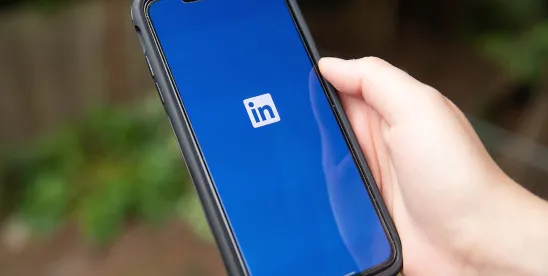With more than 900 million users globally, LinkedIn offers a unique platform for lawyers and professionals of all kinds to build their personal brand, engage with clients and colleagues, and grow their businesses. However, many lawyers underutilize LinkedIn, missing out on its full potential. In this blog post, I’ll explore how you can maximize LinkedIn, from building a powerful profile to effectively engaging with your network.
Why LinkedIn Matters for Lawyers: LinkedIn is not just a job search platform—it’s the world’s largest professional networking site and a vital tool for lawyers. During the COVID-19 pandemic, LinkedIn saw a 25% increase in users, highlighting its importance as a professional networking tool when in-person meetings were not possible. Today, LinkedIn remains the primary platform for professional interactions, making it indispensable for legal professionals.
For lawyers, LinkedIn serves multiple purposes:
- Networking: Connect with colleagues, clients, recruits and prospects, and maintain and grow these relationships over time.
- Personal Branding: Showcase your expertise, share insights and position yourself as a thought leader in your field.
- Business Development: Generate referrals, attract new clients and identify new business opportunities.
- Recruitment: Attract top lateral talent by showcasing your firm’s culture, achievements,and opportunities for professional growth.
According to research, 62% of law firms report LinkedIn as their most effective social platform, and it drives 97% of social media traffic to law firm blogs and websites. These statistics underscore the importance of having a strong LinkedIn presence.
Building a Powerful LinkedIn Profile
Your LinkedIn profile is the cornerstone of your professional brand. It’s often the first point of contact potential clients, employers or colleagues have with you. An optimized profile not only enhances your visibility but also increases your credibility and attractiveness as a legal professional. Here are the key elements of a strong LinkedIn profile.
- Profile Photo: A high-quality, professional headshot is essential. Profiles with photos are viewed 14 times more frequently than those without. Your photo should reflect professionalism while being approachable—smile and ensure the image is current.
- Custom LinkedIn URL: Create a custom LinkedIn URL to make your profile easier to find and more professional. This simple change can enhance your visibility and make your profile appear more polished.
- Cover Image: Use the cover image section to further your brand. This could include a professional background related to your field, a city skyline, or even firm branding. Consider including your contact information in the cover image to make it easy for people to reach you.
- Headline: Your LinkedIn headline is one of the first things people see and it is pulled into LinkedIn and Google searches about you, underscoring its importance. It should be more than just your job title; it should highlight your key skills, areas of expertise, and what makes you unique. For example, instead of “Partner at XYZ Law Firm,” consider “Real Estate Partner at XYZ Firm | Real Estate Law Professor | Leading High-Profile Urban Development Projects.”
- Summary/Bio: The summary section of your LinkedIn profile should be written in the first person, reflecting your personality and professional background. It’s an opportunity to tell your professional story and highlight your professional achievements in a conversational tone. It should not simply be a copy of your resume or a third-person bio from your firm’s website. Aim for 3 to 5 short paragraphs that clearly communicate who you are, what you do and why you do it. Include relevant keywords to improve your search visibility on LinkedIn.
Highlight Your Professional Background
Include detailed information about your past experiences, education and accomplishments on LinkedIn is crucial. It not only showcases the breadth of your experience but also creates connection points with others.
- Experience Section: Don’t limit your LinkedIn profile to your current role. Include all relevant past positions, even those from earlier in your career. Each role adds depth to your profile and helps LinkedIn’s algorithm suggest connections and opportunities that align with your professional background. When describing your roles, focus on achievements and impacts rather than just listing responsibilities. Use bullet points for clarity.
- Education: List your educational background, including your law school, undergraduate degree and any significant training or certifications. This can be a connection point for others who share the same academic background. Include any honors, relevant coursework or extracurricular activities that align with your professional goals.
- Skills and Endorsements: While skills and endorsements may seem less critical, they can enhance your profile’s credibility. Select skills that are relevant to your practice area and professional expertise. Reorder them to highlight the most important ones, and consider occasionally seeking endorsements from colleagues and clients to keep this section updated (bonus points if you use these endorsements as quotes in your social media efforts and also on pitches).
- Recommendations: While recommendations can be tricky due to attorney advertising rules, they can still be a valuable part of your LinkedIn profile if handled appropriately. Recommendations should focus on your skills, professionalism and the outcomes you achieve for clients without crossing into promotional language.
- SEO and Visibility: Making Your Profile Discoverable: Search Engine Optimization (SEO) is not just for websites—your LinkedIn profile should be optimized to ensure it appears at the top of search results when someone Googles your name.
- Custom URL: As mentioned, a custom URL helps your profile appear higher in search results and looks cleaner on your resume, business cards and email signature.
- Keyword Optimization: Use relevant keywords throughout your profile, especially in your headline, summary and experience sections. These keywords should reflect the terms clients or colleagues would use when searching for someone with your expertise.
- Featured Section: Utilize LinkedIn’s Featured section to showcase your best work. Pin articles, case studies, presentations or other significant content that highlights your expertise. This section serves as a portfolio of your professional achievements.
- Networking and Engagement on LinkedIn: Building a strong network on LinkedIn is not just about the number of connections; it’s about the quality of those connections and how you engage with them.
- Building Connections: Focus on connecting with colleagues, clients, prospects and others in your industry. Engage with your network by commenting on their posts, congratulating them on milestones and sharing relevant content. Quality over quantity is key—having a smaller, engaged network is more valuable than a large, inactive one.
- Google Alerts: Set up Google Alerts for yourself, your top clients and key industry terms. This keeps you informed about relevant news and provides opportunities to engage with your network. For instance, if a client is mentioned in the news, you can reach out to congratulate them or offer assistance.
- LinkedIn Notifications: Use LinkedIn notifications to stay updated on your connections’ activities. This includes work anniversaries, job changes, birthdays and shared content. These notifications provide easy touchpoints to engage with your network and strengthen relationships.
Leveraging LinkedIn for Professional Growth
LinkedIn is a powerful tool for career growth, offering opportunities to enhance your brand, attract new clients and position yourself as a thought leader in your field.
- Content Sharing: Regularly share content that showcases your expertise. This could include articles you’ve written, legal updates or insights into industry trends. Sharing content positions you as a thought leader and keeps you top-of-mind within your network.
- Posting Frequency: Consistency is key on LinkedIn. Aim to post at least once a week, whether it’s sharing an article, commenting on industry news or celebrating a professional milestone. Regular activity increases your visibility and engagement on the platform.
- LinkedIn Premium: Consider upgrading to LinkedIn Premium if you require additional tools for prospecting, networking and analytics. Premium offers insights into who’s viewing your profile, access to LinkedIn Learning courses and the ability to send InMail messages to people outside your network.
- LinkedIn QR Code: Use LinkedIn’s QR code feature (which you can access through the LinkedIn app on your mobile device) to quickly connect with others at events or meetings. Save your LinkedIn QR code to your phone’s home screen and share it easily when networking. This feature streamlines the connection process and ensures you can quickly follow up with new contacts.
- Public Profile Settings: Review your LinkedIn public profile settings to control what information is visible to people outside your network. Ensure your most important information is accessible to make a strong first impression. Public profiles allow potential clients, employers, the media or lateral candidates to see your professional background without needing to connect first.
Key Takeaways for a Strong LinkedIn Presence
- LinkedIn is Essential for Lawyers: It’s the primary platform for professional networking, branding and business development. Use it to connect with colleagues, clients and potential lateral hires.
- Optimize Your Profile: A strong profile includes a professional photo, a custom URL, an engaging headline and a well-crafted summary. Highlight your experience, education and key skills to make your profile stand out.
- Be Active and Engaged: Regularly update your profile, share content and interact with your network. Active participation on LinkedIn helps maintain visibility and build stronger professional relationships.
- Use LinkedIn for Growth: Whether it’s attracting new clients, showcasing your expertise for recruiting lateral talent, LinkedIn offers numerous tools and features to help you grow professionally.
- Leverage LinkedIn’s Tools: Consider using LinkedIn Premium for additional networking capabilities, utilize the QR code for easy connections and optimize your public profile settings for better visibility.
By following these strategies, you can fully harness LinkedIn’s potential, ensuring it becomes a powerful tool for your professional growth and success in the legal industry.




 />i
/>i

